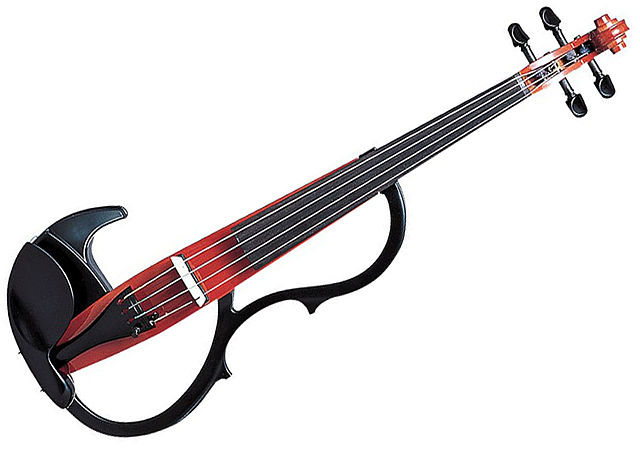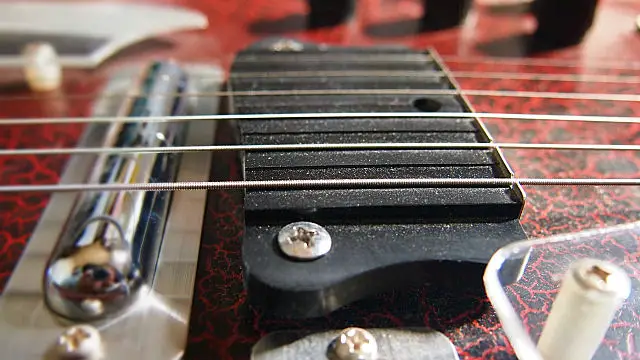Practicing a musical instrument can be a little difficult if you have neighbors that complain about the slightest bit of noise. If you have such neighbors and you’re in the market for an electric violin, you’re probably asking yourself, “Are electric violins silent?”
However, there are some misconceptions about electric Violins being silent which are addressed within this article.
Summary
Electric violins aren’t silent, but as long as they’re not plugged into an amp, they’re a lot quieter than acoustic violins. So you don’t need to worry about annoying your neighbors when playing one. You can also enjoy playing an electric violin using headphones rather than an amp.
Table of Contents
How Loud Are Electric Violins?
Electric violins aren’t too loud when they’re unplugged.
Electric violins normally have solid bodies, so they generate little sound. Because of their lack of external buildups, you can barely hear their tone unless you’re close to them.
An acoustic violin’s sound level is around 90dB. The sound level of an unplugged electric violin is between 60 to 75 dB.
If you want your violin to sound louder, all you have to do is plug it into a high-quality amplifier.
Will Neighbors Hear the Electric Violin Being Played?
Electric violins don’t have a hollow resonating cavity; they’re solid-bodied. This is why they’re quieter than acoustic violins; quiet enough not to be heard by your neighbors.
The only probable way your neighbors can hear your electric violin is if they’re completely still. Even then, it won’t be loud enough (acoustically speaking) to cause a disturbance.
How Much Quieter Is an Electric Violin?
An electric violin is quieter than any other violin. The variation between them depends on the following aspects:
Structure
What makes the electric violin quiet is not having a hollow, vibrating body. Design-wise, electric violins are built with solid structures, unlike acoustic violins.
Therefore, electric violins are more silent than acoustic ones by about 70%.
Buildups
Unlike the classical violin, the electric one doesn’t include a soundbox. Because of this, it has a low-pitched sound.
Whereas the classical violin has a natural magnifier that helps it project, the electric one needs to be plugged into an external one (amplifier).
Pickups
The violin pickup causes strings to vibrate. So the acoustic violin has a loud sound. As the pickup of the electric violin is unified with its bridge, its sound is muted.
What’s the Difference Between an Electric Violin and a Silent Violin?
If you’re wondering whether or not there’s a difference between an electric violin and a silent violin, the answer is yes.
You should know that Yamaha has made up the term ‘silent’ to advertise their first line of electric violins.

Silent violins are pretty much electric violins, but with some minor differences. Both the silent and the electric violin differ in function and sound.
For instance, the electric violin can only be played by an amp. Also, an electric violin can’t use headphones directly.
On the other hand, you can perform using either a magnifier or headphones when playing the silent violin.
As for sound, an electric violin’s tone can’t be controlled except by using an external magnifier. It produces a simple open sound because of its non-integrated pickup.
The silent violin, per contra, has many alternatives for sound control. For example, you can play built-in reverbs or flat and thick sounds.
What’s more, the amplified silent violin has an extremely strong pickup that gives you the feeling of playing in a concert. Both electric and silent violins are also arguably more forgiving and able to produce a wider variety of sounds compared to acoustic.
What Sound Do Electric Violins Make?
As mentioned earlier, electric violins have a low-pitched sound. They produce tiny, muted tones. So they’re the best fit for your in-home practice.
A silent electric violin is a perfect choice for jazz musicians. Having a solid body provides the silent electric violin with the ability to make clear and consistent sounds.
How Do Electric Violins Make Sound?
The electric violin creates sound through a process of transformation.
In electric violins, the sound waves of the vibrated strings are transmitted into electric signals. This procedure happens through the violin’s pickup and an amplifier.
The amplifier captures the electric signals produced by the pickup, then it hands over these magnified signals to a speaker. And voila, sound!

To know more details about how electric violins make sound, we need to answer an important question:
What Are the Components That Help Electric Violins Make Sound?
- Pickup
- Amplifier
- Effect units
- MIDI
- Speakers
Pickup
A violin pickup is a tool that’s attached to the bridge. It turns the strings’ vibrations into electrical signals that are captured by amplifiers.
The vibrations are transmitted into electric current through the pickup. That said, the sound of the pickup plays an important role in how a violin sounds.
Amplifier
The amplifier connects between the pickup and the speaker. It captures the string vibrations sent by the pickup, and then it transforms it into a loud, robust sound.
Effects Units
Effect units are devices that change how your electric violin sounds. They’re used by either a multi-effect processor or an individual pedal.
A multi-effect processor is one large pedal containing all the effects needed to produce unique sounds. Individual devices, on the contrary, comprise small pedals, each creating an unfamiliar sound.
Your electric violin can produce distinct sounds applying these effects pedals.
MIDI
The Musical Instrument Digital Interface (MIDI) is an electronic system that helps encode the pitch, length, and strength of the notes you play on the violin.
Strength refers to how dynamic the sound is, whereas length refers to the duration of the note.
Speakers
Pickups transfer the resonance of strings to electric signals to produce sound in electric violins. Similarly, speakers turn the electricity into sound that’s just like the violin’s original sound, but a lot louder.
Can You Plug Headphones Into an Electric Violin?
The impedance of musical instruments and headphones is incompatible. Impedance is basically a device’s resistance to the alternating electrical current flowing through it.
Musical instruments have a higher resistance (impedance) than headphones, and so there has to be an electronic circuit to allow your headphone to control your violin’s impedance.
Let’s clarify that all types of electric violins can be connected to headphones. The difference is in the way you connect them.
As we mentioned before, some electric violins (normally those we refer to as ‘silent violins’) can be plugged in directly to headphones, while others can’t. Those which can directly be connected to headphones tend to have a preamplifier with a 3.5mm jack that’s suitable for headphones.
The most common electric violins are those having a 6.35mm jack, though. Such violins require an amp to connect to headphones.
Can You Put a Mute on an Electric Violin?
Yes, you can. A violin mute is a tiny device put on the bridge to reduce the vibration of strings. Violinists use mutes to practice in silence without annoying others.
However, it’s not preferable to put a mute on your electric violin. Placing a mute on your electric violin will weaken the resonance of the bridge. This will dull the sound of your violin.
If you still want to get a mute for your violin, here are some types you should consider:
Torte Mutes
Torte violin mutes can be attached to only one violin string. You can attach them to any of the four strings. However, many people prefer attaching them to the A string.
Round Mutes
Round mutes are the smallest and most common type of mutes. Round mutes have two holes, enabling them to attach to two strings.
A round mute is made of black rubber, which is a fairly safe material for violins.
Metal Mutes
Metal mutes, made of iron or chrome-plated brass, are the heaviest of all types. If you want to minimize the sound of your violin significantly, opt for this type.
Heavy-Duty Practice
Heavy-duty practice mutes, also known as ultra-practice mutes, are quite heavy and look just like an umbrella on your violin bridge.
They’re generally more effective than torte and round mutes in terms of minimizing sound.
Wrapping Up
Your neighbors might object to hearing you practice the violin early in the morning or late at night. This is why a lot of people opt for electric violins.
Are electric violins silent? No, but they’re not as loud as acoustic violins, thanks to their solid bodies. Unless you’re close to an electric violin, you won’t be able to hear its sound. A ‘silent violin’ will provide the user with the option of plugging in a pair of headphones.
What if you want to practice loudly, though? In this case, all you have to do is plug your violin into an amplifier.
